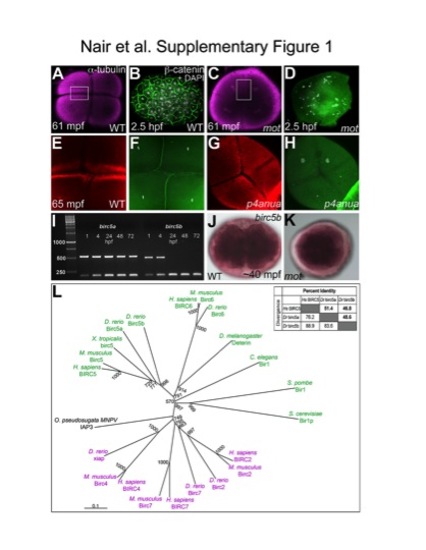
Cell division defects in the maternal-effect mutants motleyp1aiue and p4anua and identification of motleyp1aiue as birc5b. (A–H) Furrow formation defect in motley (A,B,E,F) and p4anua (C,D,G,H) mutants. During the second cell cycle, two intersecting mature cleavage furrows are seen in wild-type embryos (A), and reiterative cytokinesis results in a cellularized blastoderm with distinct nuclei as seen by β-catenin and DAPI labeling (B). During the second cell cycle, the appearance of furrows in motley (C) is due to spreading astral microtubules that never mature into furrows (D). DNA segregation errors in motley manifest as unevenly distributed DNA patches (D). During the second cell cycle, compared to the wild-type embryo (E, F), mature cleavage furrows are absent in p4anua mutants (G, H). (I) birc5a is maternally present and is expressed during all stages of embryonic development, while birc5b transcript is not detectable beyond 24 hpf. β-actin was used as a control transcript which is expressed constitutively during development (200 bp band in all lanes). (J,K) Whole mount in situ hybridizations for birc5b show ubiquitous maternal expression in wild-type (J) and motley embryos (K). (L) TreeView rendering of the ClustalX alignment of BIR proteins from several representative species indicate a trichotomy (black, green and pink groupings) in the BIR family and group zebrafish Birc5a and Birc5b with homologous Birc5 proteins. (A–H, J, K) are animal views of blastodiscs.
|

